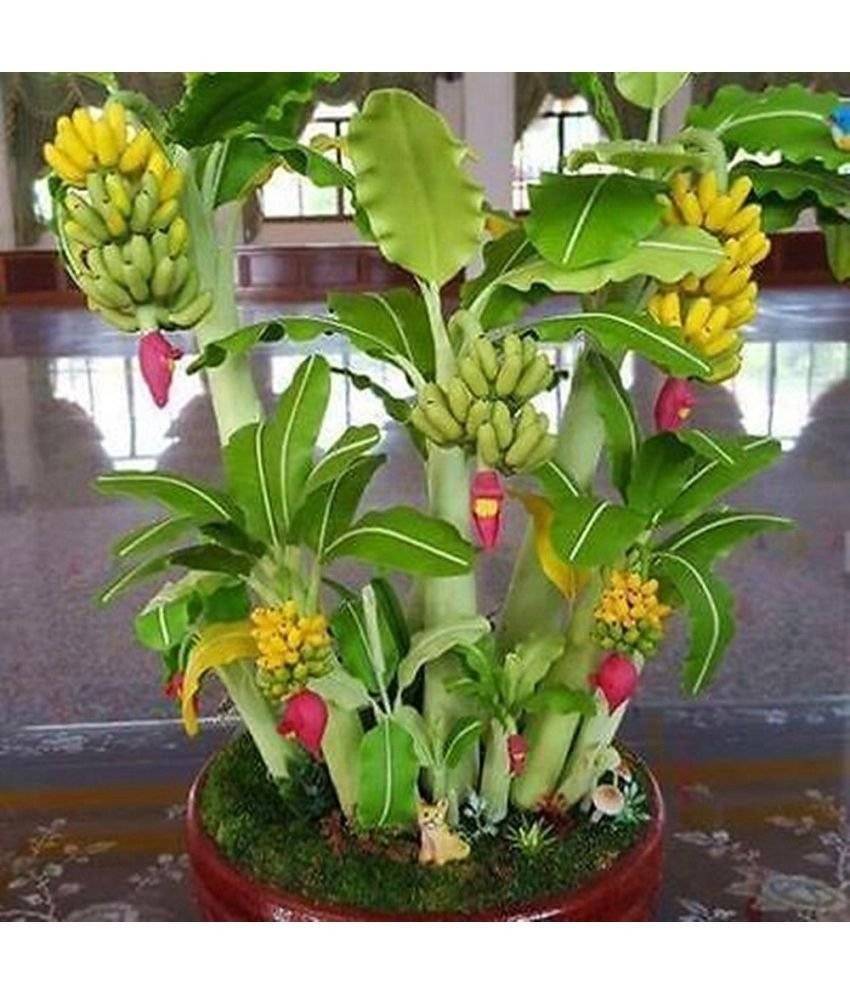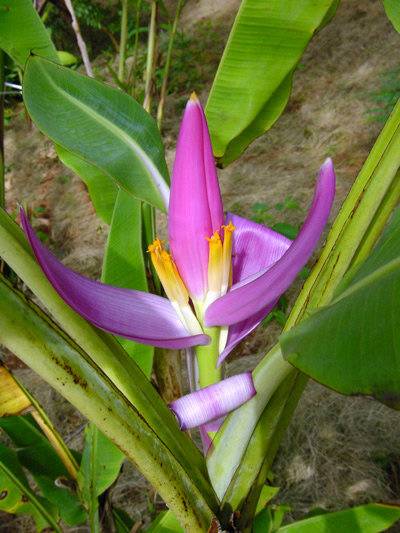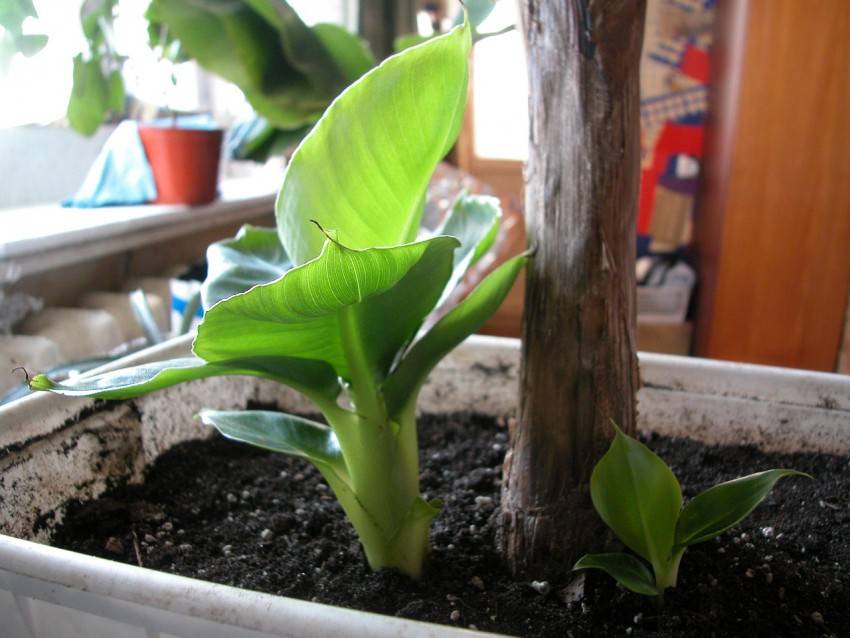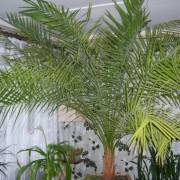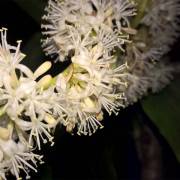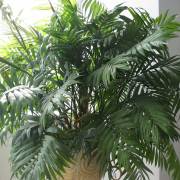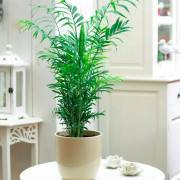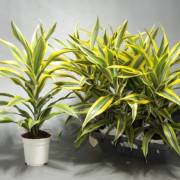Banana palm, what trees do bananas grow on?
Content:
Contrary to popular belief, the banana tree is not a palm tree, but a grass. True, it grows to a large size, since the high humidity and temperature of the tropics contribute to this. Banana is not a moody plant. If conditions are right, it even bears fruit. Harvesting can be done once a year.
Where and how does a banana grow
The homeland of the vast majority of plant species is Southeast Asia (in particular the Malay Archipelago) and Africa.
For purely decorative purposes, in an open area, a banana is also grown in our latitudes. It can also be found in the territories of the Caucasian republics. But climatic conditions do not allow the fruits to ripen.
Amateur flower growers practice growing dwarf crop species at home. The bushes grow lush, with luscious green foliage. Domestic dwarfs grow up to 4 meters even in pots, and in natural conditions you can see 15-meter giants.
How bananas grow
How bananas grow, whether it is a grass or a palm tree, has been of interest to mankind at all times. It is known for certain that it is a herbaceous plant, and it grows very quickly. Almost every week a new leaf appears and grows rapidly. A one-year-old plant may well bloom, although the stem height is only around 1 meter.
Is a banana a tree or a grass?
The common name "banana" denotes a herbaceous perennial and its fruits - the usual bananas. So asking what trees bananas grow on is wrong. Not on a tree, but on a herbaceous bush. Belongs to the Banana family, and only the climate of the subtropics and the tropics has in common with palm trees.
Bananas have about 70 species in the genus. This genus includes both edible and decorative varieties.
Dwarf varieties for home cultivation
Dwarf crop varieties attract florists with their beautiful appearance and unpretentiousness. Someone prefers varieties with rich, juicy foliage, someone likes flowers.
There are also lovers of homemade banana fruits, which are quite realistic to get from a pot culture.
Musa Velutina (Banana Velvet)
The purple banana or Musa banana Velutina is the perfect pot plant. It is often called a dwarf pink or velvety pink banana due to its small stature and peculiar pinkish fruits.
This dwarf grows to a maximum of 1.5 m. It starts flowering from 8 months of age. The leaves of the variety are long, about 1 m. One third of the length is occupied by petioles. The edges of the plate are red. As they grow older, the lower leaves dry out and fall off. Fresh leaves grow to replace.
Edible, miniature bananas. There are about 10 of them in one bundle. There are many seeds in the pulp of the fruit. The uniqueness of this variety lies in the ability to bloom and produce crops at home at any time of the year.
Musa violacea (banana purple)
An interesting hybrid of M. Velutina and M. Flaviflora.It is suitable for potting. It grows very quickly. It blooms at any time of the year when it reaches 1 m in height. The flowers are pink-lilac, the flesh is white. Leaves reach 1 m in length and 0.3 m in width.
Musa Coccinea (bright red banana)
Indochinese banana or Musa banana Coccinea is prized for its reddish-red flowers. Flowering lasts 3 to 6 months. The fruits are tasteless and have no nutritional value. Unlike many other varieties, this banana grows calmly and in partial shade.
Musa Ornata (Lavender banana)
Musa banana Ornata Orange is a flowering banana. One of the most common varieties for home keeping. Grown exclusively for flowers. The fruits ripen, but they are inedible. The color of the fruit is ashy pink. There are many seeds in the pulp.
Banana blooms all year round. The inflorescences are beautiful, lilac-yellow-orange. The bract never droops down. Leaves add decorativeness. They are painted with lilac and pink veins on a green leaf.
Features of caring for a banana at home
Banana is a tropical inhabitant. This determines the basic rules for caring for it: it should be warm, light and humid.
Temperature
In its natural habitat, the optimum temperature for the culture is from 22 to 35 ° C. Temperatures below 15-16 ° C slow down the development of the bush, and at 10 ° C, growth stops.
Lighting
When grown at home, a banana should be provided with long daylight hours. At least 14 hours a day. In the summer, you can do without additional lighting. There will be enough light on the south window. In winter, you will have to use additional external lighting.
Watering
The culture is extremely hygrophilous. In summer, it requires watering at least once a day. In extreme heat, watering is recommended both in the morning and in the evening.
In winter, watering is adjusted according to the circumstances. The main thing is not to allow the soil surface to dry out.
Spraying
The crop responds well to spraying. Along with watering at the root, you can spray the bush with a spray bottle. Only the water should be properly defended. Melt or rainwater is ideal for irrigation.
Humidity
Air humidity is of great importance in the cultivation of this herb. With values of this indicator below 60%, the leaves wither and dry out. The decorative effect is lost.
You can use a humidifier to maintain proper humidity. Alternatively, spray and / or a container of water next to the pot.
Priming
Although banana is not a member of the palm family, they have the same preference for soil quality. Therefore, it is quite possible to buy a ready-made mixture for palm trees. If you prepare the soil yourself, then it should be noted that a light, neutral (pH 6-7) soil is suitable for a banana plant.
The approximate composition looks like this:
- river sand - 2 kg;
- ash - 0.5% kg;
- peat or rotted foliage (or rotted organic matter) - 1 kg;
- garden land - 10 kg.
The main advantages of such a mixture are hygroscopicity and nutritional value.
Top dressing
Banana trees grow very quickly. To maintain good development, the culture needs regular feeding. Nitrogen and organic fertilizers are especially important. The regularity of top dressing is 2 times a month. This will be followed by flowering, setting and ripening of fruits. During this period, with the same regularity, potash fertilizers should be applied.
Features of winter care for a banana
The home content of a native of the tropics in the winter is completely different. Banana is resting in winter. This means that the plant follows:
- place in a cool room with a temperature of 5-10 ° C (away from radiators);
- trim the leaves;
- mulch the root zone;
- limit watering.
But the lighting should remain the same.
How the banana tree blooms
At the age of about a year, peduncles make their way from the tuber of the plant, and pass along the entire length of the trunk. It is curious to see how the banana palm blossoms. First, a lilac or green bud grows at the top of the peduncle. Then, in the lower part of this bud, in several tiers, flowers of three petals and sepals hatch.
How the banana palm reproduces
If desired, you can dilute the banana yourself. This can be done in several ways.
Germinating seeds
It is quite affordable for anyone who wants to grow a banana from seeds. This will require:
- seeds;
- small pots;
- light soil;
- glass or film;
- settled water for irrigation.
With this method, the seeds must be cut from one side. Their shells are very hard and an incision will help accelerate germination. Then the seeds are placed in warm water for 24 hours. After this period, the seeds are planted in separate cups, watered and covered with foil / glass.
In a warm place, while maintaining high humidity, the seeds begin to germinate. The process is long. Sprouts may appear, at the earliest, in two weeks. Other species germinate only after two months.
The transplanting of seedlings into spacious pots occurs when they reach a height of 10-15 cm. The procedure itself is carried out by transshipment so that the roots of the sprouts are not damaged.
Rooting cuttings
The herbaceous bush almost always gives root shoots. Palm with bananas in this case is no exception. This makes it possible to get a new plant quite easily.
The shoot, with a piece of root, is carefully torn off the parent bush and planted in a separate container. The potting mix and keeping conditions are the same as for a young plant. This is warmth, humidity and light.
Banana palm transplant
The banana quickly gets cramped in the pot. Due to its rapid growth, a pet may need to be transplanted even several times a year. Each time the pot in diameter is selected 2.5-3 cm larger.
Potential Problems in Banana Growing
By nature, a banana is a sturdy plant. Problems may arise through the fault of the owner.
In the first case, the leaves dry and darken or the roots rot, and in the second, the leaf plate turns yellow.
Sometimes aphids or spider mites attack the bush. This occurs when adjacent to other indoor plants. In case of damage by pests, chemicals such as "Aktara" will help.
Keeping a banana bush is not difficult at all. For loving care, he is responsible for the owner of lush greenery, exotic flowering. A properly selected variety, almost guaranteed, will delight you with delicious fruits.

